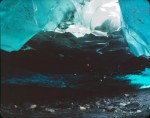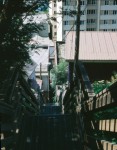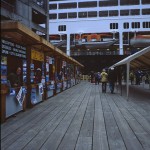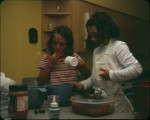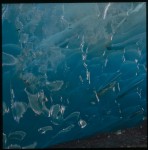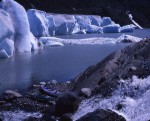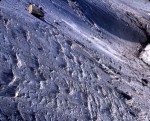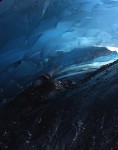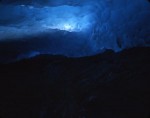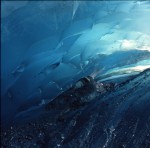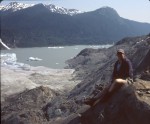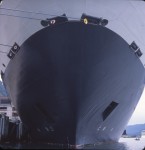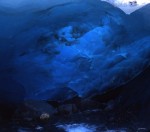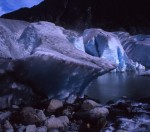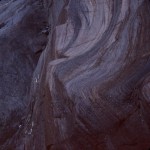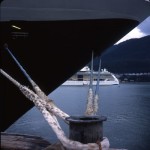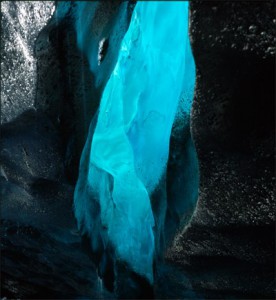 Some glaciers are relatively stable. The Mendenhall is not one of these. At this fissure, the race is on between the melt action from the outside edge and thinning ceiling caused by the increasing depth of the crack. When I found this ceiling crack, I knew I had to try to get an image of it before it disappeared.
Some glaciers are relatively stable. The Mendenhall is not one of these. At this fissure, the race is on between the melt action from the outside edge and thinning ceiling caused by the increasing depth of the crack. When I found this ceiling crack, I knew I had to try to get an image of it before it disappeared.
It’s shot on Provia 400X with about a half-second exposure. Because of the height of the ceiling and the orientation of the crack, I was unable to get everything in focus with the TL120-1. Yep, the foreground is soft, but I feel it isn’t too distracting. A greater distraction is the stream of water very near the camera. Again, there was nothing I could do about it, so I made the image as best I could.
This is one image I whole-heartedly suggest experiencing inverted. Flip that slide over and see what’cha’ think.
This is also an image which I have found impossible to color-match between the slide and the computer screen. The colors just don’t exist in the sRGB space to present the colors on the film.
August, 2011 – Tripod mounted TL120-1, Provia 400X
